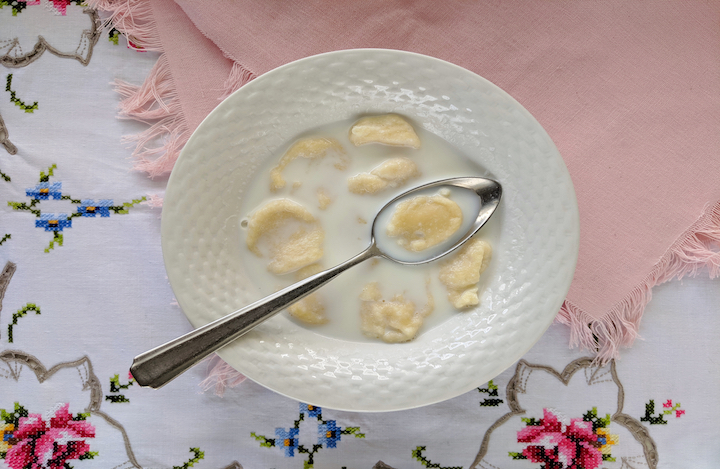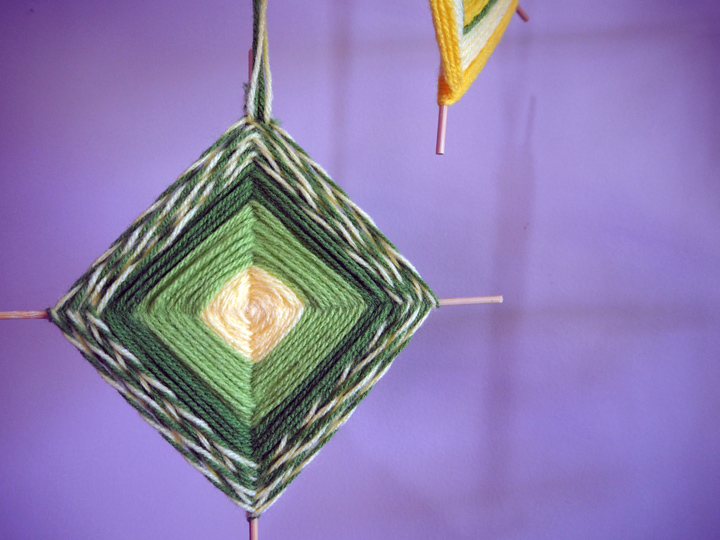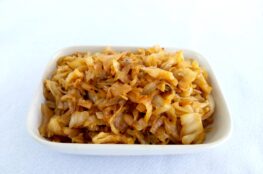Māra is one of the ancient Latvian deities – mother of the land, protector of women and guardian of livestock. In the modern times, Māras are celebrating their name day on March 25, while our ancestors celebrated Māras four times a year:
- Winter Māra or Candle Day (Ziemas Māra jeb Sveču diena) on February 2,
- Spring Māra or Cabbage Māra (Pavasara Māra jeb Kāpostu Māra) on March 25,
- Summer Māra on August 15, and
- Autumn Māra on September 8.
Spring Māras
Spring Māras fall between Meteņi that signifies the end of the winter and Lieldienas (Easter) that signifies the beginning of the spring. It was believed that nature is waking up on this day and getting ready for the new growing season. Folktales state that bears that started hibernation on Mārtiņi (November 10) would wake up on Māras, therefore, humans had to wake up before the sunrise to avoid bears passing their sleep to them. It was also important to wash the face in a creek before the sunrise to gain health, strength and beauty.
Visu nakti negulēju,
Māras rīta gaidīdama,
Lai lācītis celdamies
Savu miegu neatdeva.
Cabbage in Māras traditions
The basis of Spring Māras tradition is the ancient Cabbage Day; Māras diena is known in some regions as Kāpostnīca (“kāposts” meaning cabbage), and it represented the start of sowing and planting season. In the autumn, seed cabbage would be pulled from the ground and placed in the root cellar. By Māras, seeds would have matured, and if the cabbage was tipped upside down, the seeds would fall out, indicating its time to sow them. Māras was observed strictly as it was believed not to be a good day for sowing and knitting otherwise pests would eat all the seedlings or letting livestock out to pastures. However, an exception was made to sowing cabbage so they grow large and flavourful.
One has to note that the “old calendar” had Māras on April 7, when the weather was much warmer and seeds had a better chance to survive.
Food traditions
Even though the day was associated with cabbage, it was not cooked or served on the day. Eating peas was frowned upon too; it was believed cabbage will be affected by pests. Dishes served on Māras revolve around dairy as it would bring more milk to the cows. Traditional dishes include:
- Ziediņi – dry, crumbled cottage cheese, mixed with boiled or fresh milk, served with bread and honey,
- Kupiņas – dry, crumbled cottage cheese, mixed with sour cream, buttermilk or curdled milk, served with bread, honey or herring,
- Pigarica – finely crumbled rye bread fermented with honey or sugar. It was eaten as a dessert or served as a refreshing drink,
- Spudiņš or drebelis, known as galerts (aspic) these days – made from veal and served with horseradish, mustard or vinegar,
- Milk and dumpling soups were also very common.
Other traditions
Many traditions revolved around livestock. Māras was the last day when pigs were fed inside the barn; their throughs would be tipped over forcing pigs to look for food on the fields. Cows were rubbed with ice so the mosquitos don’t bite them in the summer and whipped with twigs saved from Mārtiņi so the cows do not wander too much.
It is believed that Spring Māras is the day when trees feel the pain; therefore one cannot chop, cut, break or even tap a tree. It was imperative not to go in the forest, especially to bring anything home from the forest otherwise snakes would come into the house and yard. However, it is a celebration of apple trees – they are decorated with ribbons to entice a good apple harvest. Meanwhile, berry bushes would be whipped with pussy willows for plentiful berry offering.
Māras was also a celebration of the fire. The fire was let to rest in the evenings until Labrenča diena in August, and Māras indicated the first dinner of the year in the sunlight and going to bed without lighting the fire. This tradition would protect fields and farms from lightning and fire-related accidents.
If there is frost on Māras, it will be frosty for another 40 days.
If the night before Māras was cold, the spring will be cold.
If it is wet on Māras, July will be wet.
If it is cold after Māras, autumn will be cold.
Ingredients
- ½ cup flour
- ½ cup milk
- 1 egg
- 1 tbsp sugar
- Pinch of salt
- 2 ½ cups water
- 2 tbsp sugar
- Pinch of salt
- 2 ½ cups milk
- Butter to serve
Instructions
- Start by preparing dough for dumplings. Combine flour, milk, egg, sugar and salt in a bowl. Whisk ingredients together well to form thick dough.
- To make dumplings, bring water to a boil in a saucepan. Using a wet teaspoon, form a dumpling from the dough and drop into the boiling water. Repeat until all dough is used up. Boil dumplings for 3 to 5 minutes.
- Add sugar, salt and milk to the dumplings. Simmer on low heat for 5 minutes to heat up the milk.
- Ladle soup in bowls, add a teaspoon of butter and serve hot.




